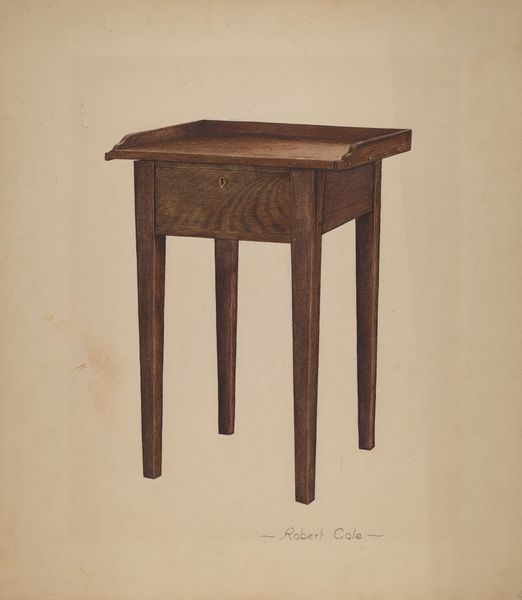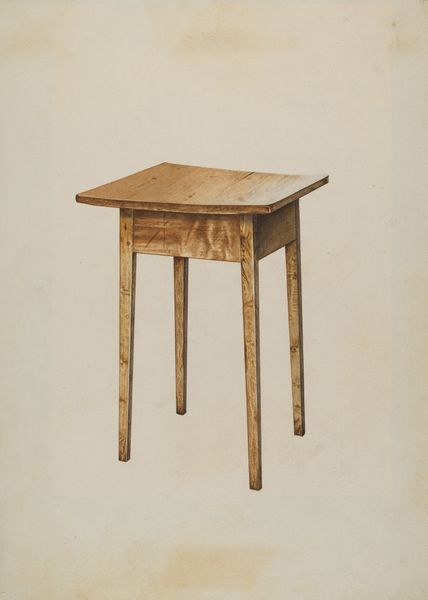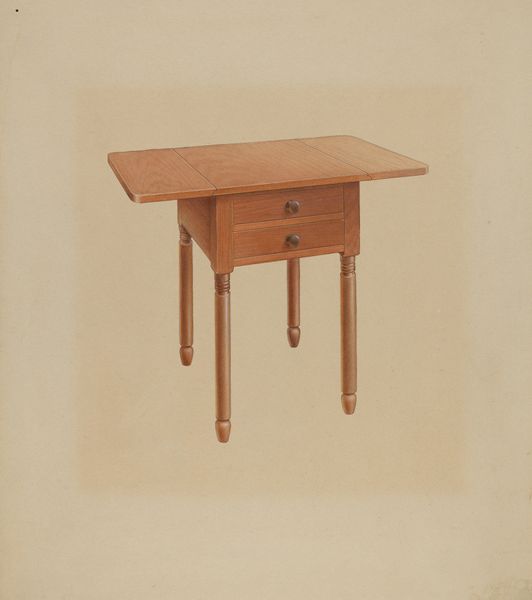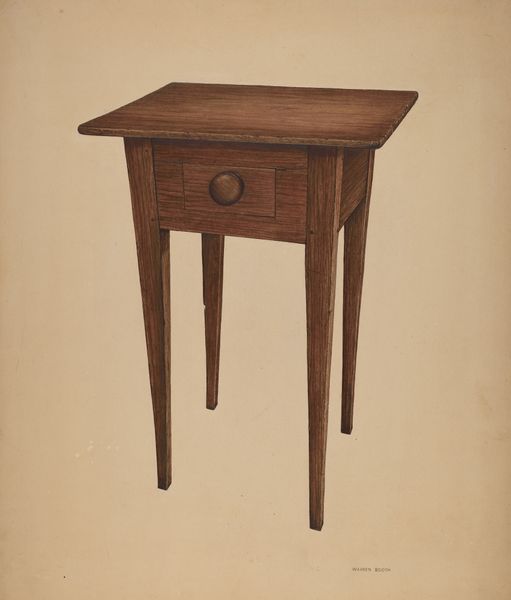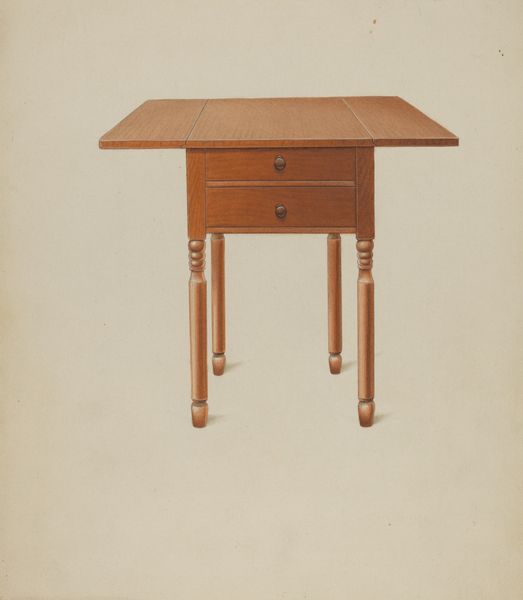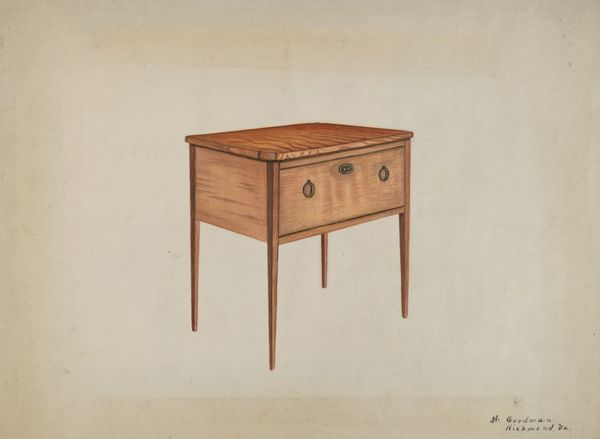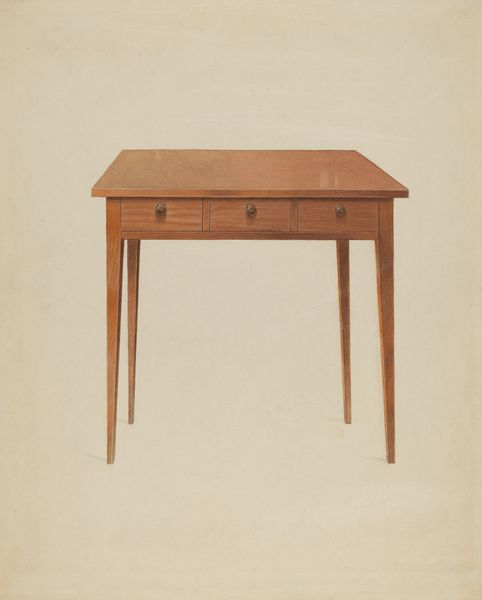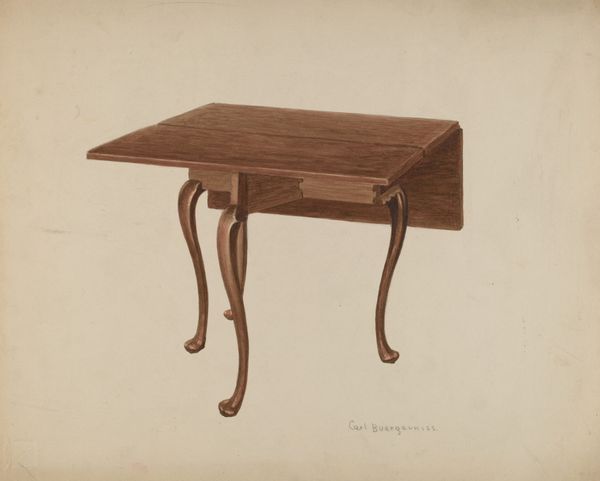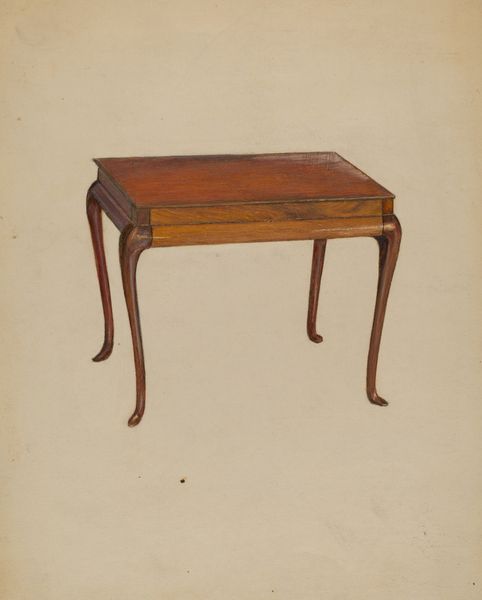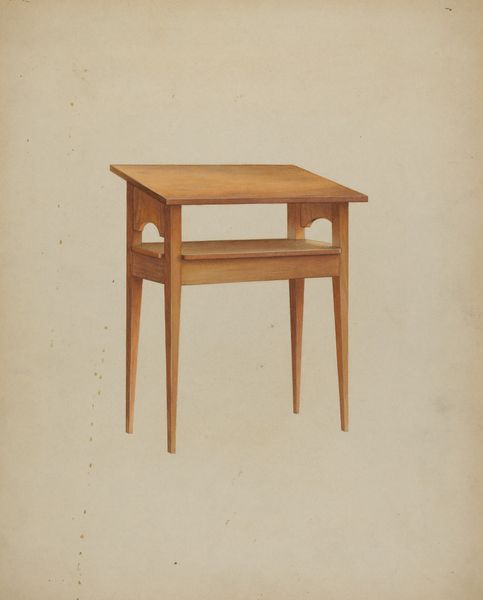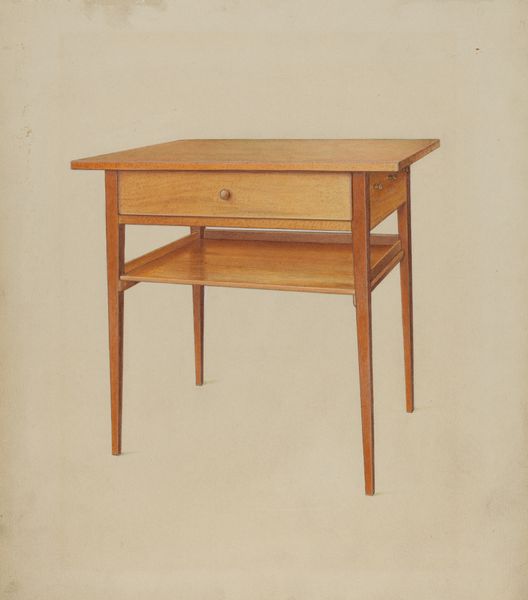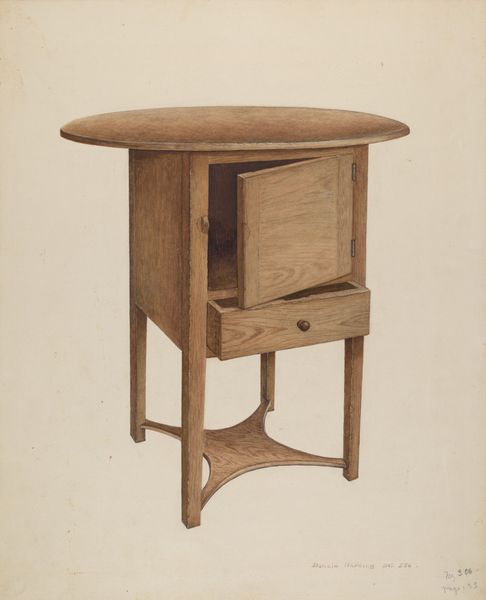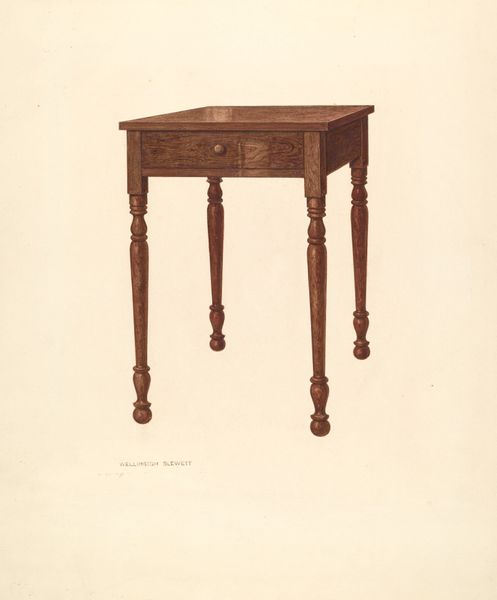
drawing, watercolor
#
drawing
#
water colours
#
charcoal drawing
#
watercolor
#
watercolour illustration
#
watercolor
#
realism
Dimensions: overall: 35.3 x 24.4 cm (13 7/8 x 9 5/8 in.) Original IAD Object: none given
Copyright: National Gallery of Art: CC0 1.0
Curator: Here we have "Table" by Jack Williamson, created around 1940 using watercolor and charcoal. It’s a study, seemingly for a furniture design. Editor: My first impression is its elegant simplicity. The elongated, slightly curved legs give it a certain delicate grace. Almost feels like it's about to curtsy! Curator: It’s interesting that you mention elegance, because the design speaks volumes about mid-century American ideals. Simplicity in the home, functional beauty accessible to a wider public, and that era’s focus on streamlined forms. The table is portrayed democratically, free from ornamentation and high craft. Editor: That’s where I see it differently. The rendering, with the meticulous detail on the wood grain, suggests a valuing of craft. And watercolor, though seemingly modest, requires tremendous skill. It’s not simply a mass-produced object; it’s rendered as a thoughtful, material-rich item. What’s concealed within? What is the purpose of its function? Curator: Perhaps. However, presenting it in watercolor itself subtly downplays the idea of grand craftsmanship and more expensive material. Watercolor allowed for faster reproductions of designs, influencing the rise of affordable, modern design in home magazines and catalogs accessible to a wider middle class. The choice of the medium reveals part of its message! Editor: Good point, considering that other industrial design renderings were popping up elsewhere as blueprints. Yet, let's also consider the manual labor invested in creating the actual furniture item, something often disregarded. A similar but physical creation will necessitate precision in handling the wood itself, as well as knowledge on proper ways to craft and manufacture a design like this. What does the watercolor painting fail to tell us about it? Curator: It brings up the fascinating debate between design as art versus design for mass production. Either way, it is useful in demonstrating how popular culture was heading during that era in America. Editor: Yes, and focusing on the materiality highlights how design intertwines not just with aesthetics, but also with labor and economy. Curator: Indeed, it invites reflection on the layers behind design, and how objects of function play a crucial role in reflecting social dynamics and consumerist pursuits of its period. Editor: A quiet, contemplative item but heavy with implications, materially and historically. Curator: Agreed! It underscores the idea of how everyday design reflects and shapes its era.
Comments
No comments
Be the first to comment and join the conversation on the ultimate creative platform.
